
Minimum Size Room for a Golf Simulator
To set up a golf simulator room, you need at least 14 feet of length, 10 feet of width, and 9 feet of height. However, having more space can help you feel more comfortable and avoid damage to your home. Consider these factors for your home golf simulator setup:
- Player Height: Shorter players might work with lower ceilings; taller players need higher ceilings for their golf simulator setup for tall players.
- Swing Mechanics: Golfers with long backswings need more height and width compared to those with compact swings. This is crucial when considering best golf simulator setup for different swing styles.
- Comfort: Ensure the space allows a free, unrestricted swing without feeling cramped, which is vital for your comfortable golf simulator experience.
How to Measure Your Room for a Golf Simulator: A Simple Step-by-Step Guide
Setting up a golf simulator at home is exciting! But first, let's make sure you have enough room. Here’s a simple and fun guide to get you started.
1. Test Your Swing
Before diving into measurements, grab your clubs and test your swing in the room. Start with your wedge and work up to your driver. Ask a buddy to watch from behind and see how close you get to the ceiling. Don’t forget, a hitting mat adds 1-2 inches.
Can you make a full swing without worry? Great! If not, you might need a different spot.
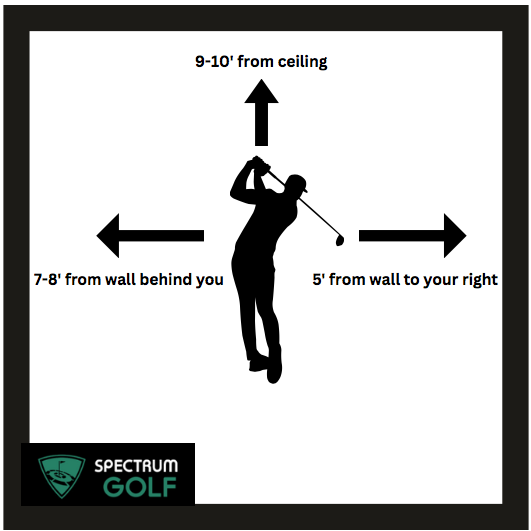
Try to position yourself in a spot where you’ll have your centered tee in your setup. For a right-handed golfer, you’ll want around sixty inches from the wall to your right and 84 to 90 inches from the wall behind you as you swing.
If you can make a full swing without worry, this is a good sign that you’ll have the space you need to install a golf simulator.
2. Record Measurements
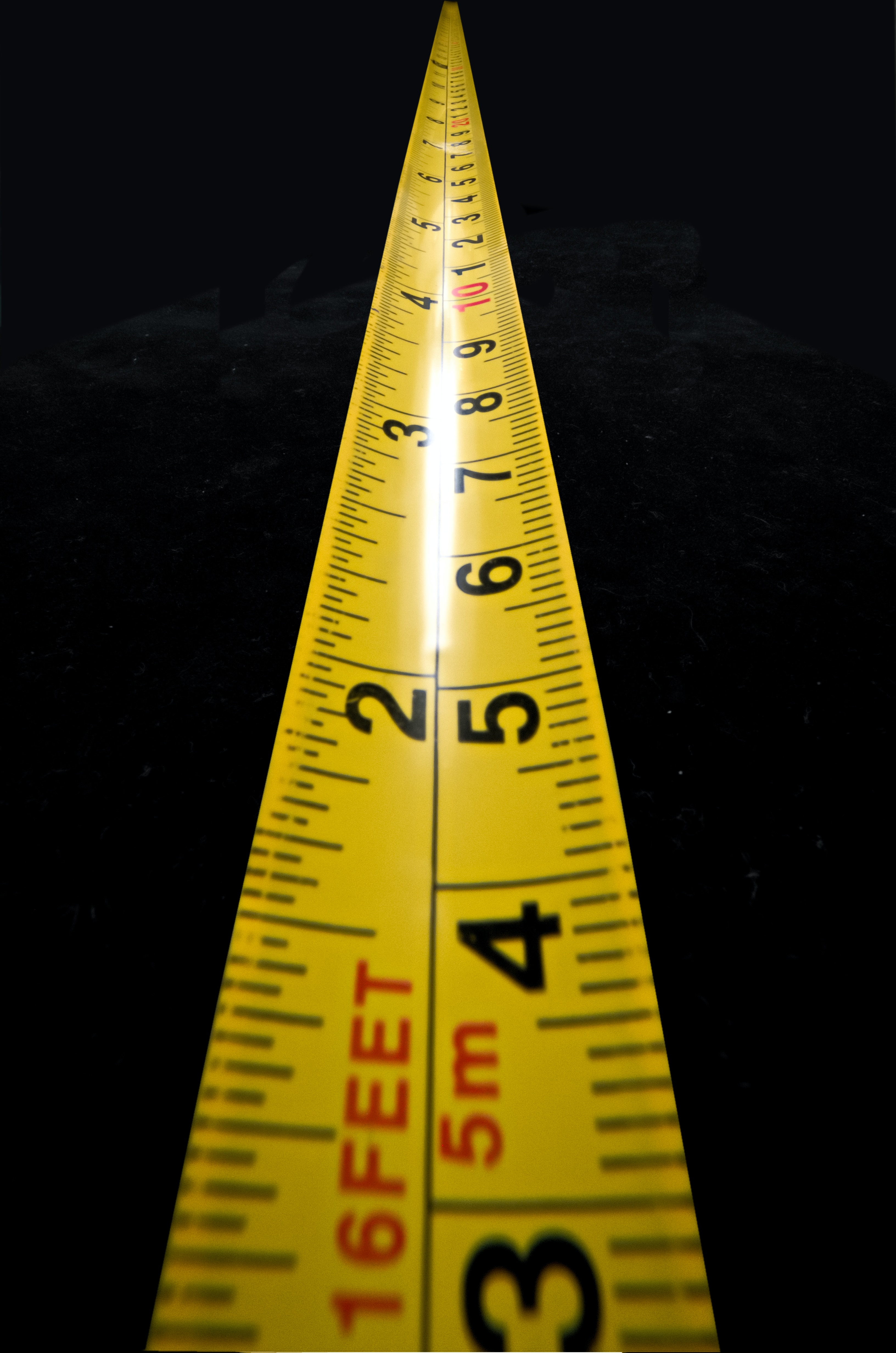
Time to play detective! Grab a tape measure and notepad to jot down these key dimensions:
- Height: Measure floor to ceiling. Minimum ceiling height for a golf simulator is nine feet.
- Width: Measure wall to wall. Recommended width for a golf simulator is 10 feet or more.
- Length: Measure the room’s depth. A typical setup needs about 18 feet.
3. Note Any Obstacles
Look around for anything that could get in the way—like AC units, light fixtures, doorways, or sloped ceilings. Common obstacles in a golf simulator room can affect your setup, so note them all.
4. Consider the Setup You Want
Now that you’ve done measuring, it’s time to consider your preferences. What are you seeking for your golf simulator? A basic, simplistic setup with just the bones in place? Or a fully realized commercial setup with extra side netting and an immersive enclosure?
It’s important to take into account what you want, because if the room isn’t offering the kind of room you need to build, you may want to consider moving it to a different area.
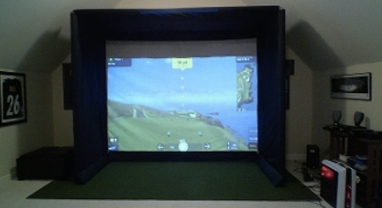
However, today you can still find impressive golf simulators that will fit into smaller spaces, so don’t feel defeated if you think your space is too small for what you want.
5. Consult a Professional Company
Lastly, you may want to contact a professional company to see what your options are. Find a reliable, trusted golf simulator company that can listen to your measurements and help you find a setup that’s right for you.
At Spectrum Golf, we collaborate with our customers to build the ideal setup for their situation. You can simply fill out our form and we’ll get back to you with suggestions.
Consulting with professionals can be very valuable, as it can take some stress off your shoulders and ensure that you’re getting the setup you need for the space you have at your disposal.
How to Choose the Right Room for Your Golf Simulator
Many times, people are unsure where they should put their golf simulator. They may have multiple options and are unsure what to look for when it comes to finding the perfect place for installation. While there’s no easy solution, there are ways to narrow down your options to find the best spot. Consider these simple tips.
Find the Largest Spaces
Basements and garages are some of the most common places people choose to install their golf simulators, partly because they offer the most space. The more space you have, the more options you’ll be able to choose from and the more comfortable you’ll feel while you’ll swing.
Keep in mind: while one space may be ideal for your swing, it may not offer the height needed for other players. Open, large spaces offer the kind of room where even tall players can feel comfortable swinging.
Avoid Obstructions
The fewer obstructions you have in the space you choose to install your golf simulator, the fewer problems you’ll likely run into. Clear, large spaces are ideal places for golf simulators, as they offer a blank slate where you can design and install exactly what you want.
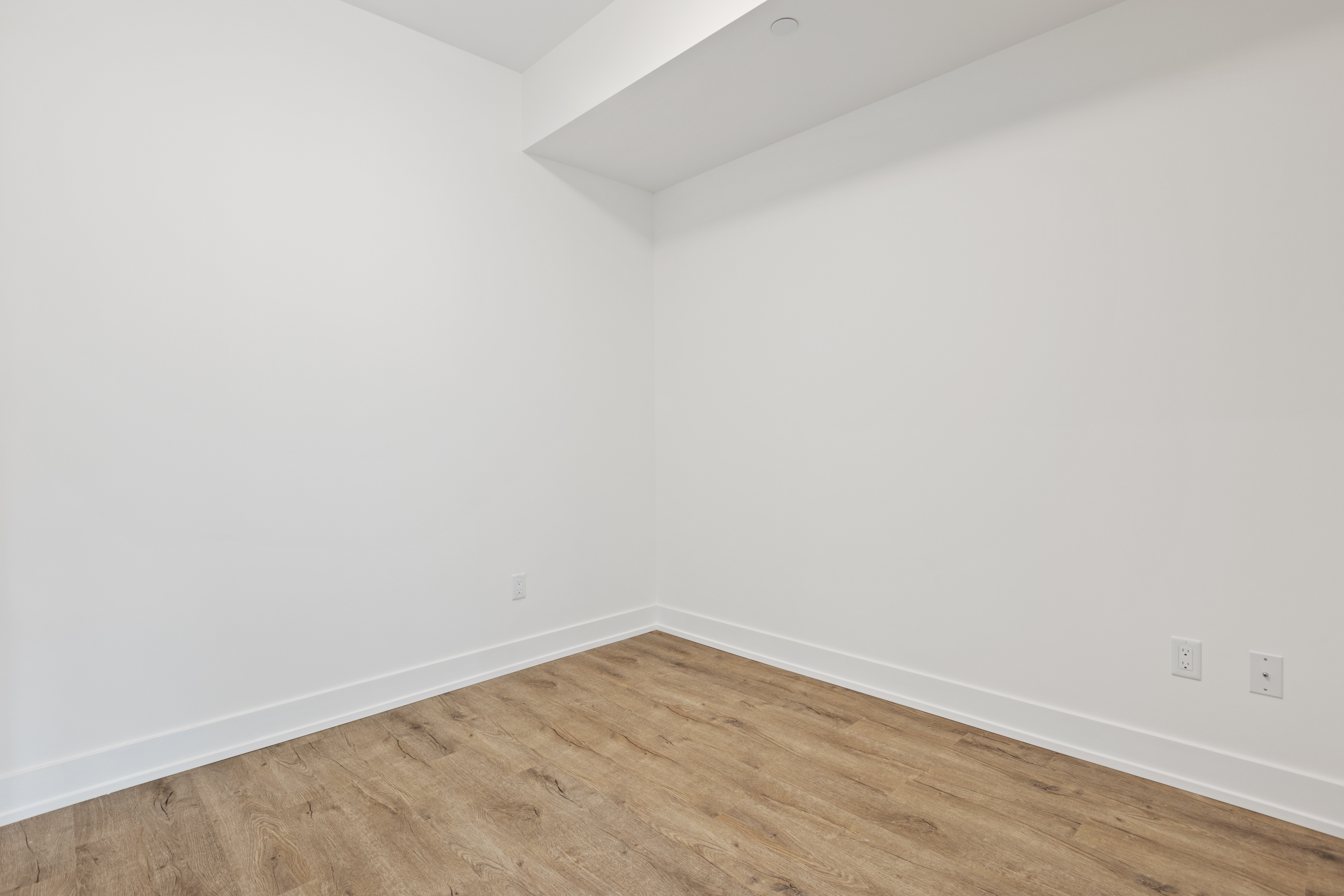
Consider Noise and Safety
While golf simulators offer impressive technology that friends and family can enjoy together, they can also be noisy. You’ll be striking the ball into a screen time after time, which could keep people up at night if it’s located in a central location. Likewise, you’ll need to watch for any roaming children or pets in your backswing.
You may want to consider putting your golf simulator in an area that’s tucked away from the rest of your home. This way, it still offers convenience but also gives you peace of mind when you’re using it.
FAQs
Here are some frequently asked questions related to golf simulator room measurements.
What Ceiling Height Do You Need For a Golf Simulator?
You’ll need at least nine feet of height. Minimum ceiling height for home golf simulator ensures you won’t hit the ceiling during your backswing.
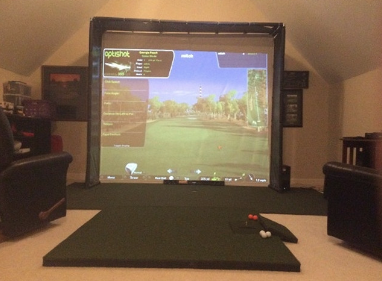
How Much Room Do You Need For a Golf Simulator Screen?
The space needed for a golf simulator screen includes some extra buffer space to avoid damage. You’ll also want to keep in mind that the golf simulator enclosure is where a lot of extra space is taken up. If you’re looking for an enclosure to go along with your screen, you’re going to want a lot more space.
Also remember that you’ll want to keep a buffer between your golf screen and the wall behind, so as to avoid any damage. This relates to the total depth or length of your room, which takes into account your whole simulator, from tee to the end of the enclosure.

Find the Ideal Golf Simulator at Spectrum Golf
Installing a new golf simulator in your home can be an exciting but also stressful process. From taking measurements to designing the right setup and finding great products you can rely on, there’s a lot to keep in mind. One of the best ways to make the installation smoother is by finding a reliable seller that can offer you quality products at a good price.
Spectrum Golf is dedicated to providing customers with the highest-quality golf simulator products on the market, from golf screens to enclosures to golf mats. We can collaborate with you and even design a setup that’s specific to your needs. Or, you can feel free to browse our selection at your convenience to find what you’re looking for.
Feel free to reach out if you have any questions or need assistance with installation. Contact us today!


